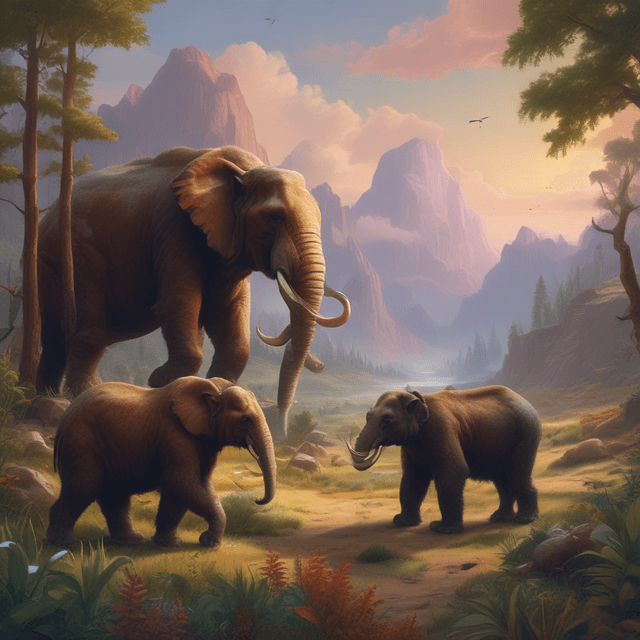
| Fauna | Diverse and robust animal species, including persistent megafauna like woolly mammoths, giant ground sloths, and saber-toothed cats, as well as newly evolved predator species |
| Isolated Regions | Unique endemic species |
| Ecological Niches | Large, dangerous wildlife coexisting more directly with humans in many areas |
| Comparison to Earth | Less impacted natural world with broader range of megafaunal species |
The fauna of this alternate Earth is marked by a greater diversity and prevalence of large, robust animal species compared to the modern world. Throughout much of the planet, megafauna that disappeared from our timeline during the Holocene extinction have persisted and even thrived, while new predatory species have evolved to fill ecological niches.
One of the most striking aspects of this world's fauna is the continued presence of iconic megafaunal species that vanished centuries ago in our timeline. Woolly mammoths roam the northern tundras, with sizable herds found as far south as the temperate forests of Siberia and North America. Giant ground sloths and glyptodons lumber through the forests and grasslands of Central and South America. Massive sabre-toothed cats and cave bears prowl across Eurasia and North America, while the oceanic Megalodon shark still rules the world's seas.
These large, powerful animals have continued to thrive in the absence of intensive human hunting and habitat destruction. Their sheer size and strength allow them to better compete with human settlements, and many have adapted to coexist with or even raid agricultural areas. Interactions between humans and megafauna are a daily reality in much of the world.
Where megafaunal herbivores have persisted, so too have new species of apex predators evolved to take advantage of the available ecological niches. In Australia, the massive Marsupial Lion (''Thylacoleo carnifex'') continues to terrorize the continent's unique marsupial fauna. The Gigantopithecus ape stalks the forests of Southeast Asia, while the Smilodon populator rules the grasslands of South America.
Even in regions where human activity has reshaped the landscape, new predator species have emerged. The Dire Wolf (''Canis dirus'') has adapted to hunt in the scrublands and deserts of the American Southwest, while the Megalania (''Varanus priscus''), a massive monitor lizard, dominates the food chain of Australia's arid interior.
Isolated regions like islands and mountain ranges have given rise to a diverse array of endemic megafauna. The Hawaiian Islands are home to giant flightless birds like the Haast's Eagle and Emus have evolved to fill avian niches across the Pacific. The New Zealand moa species, some standing over 12 feet tall, graze the island's lush forests.
Similarly, high-altitude regions like the Andes and Himalayas harbor unique species like the Wollemi Pine, a "living fossil" tree, and the Himalayan Brown Bear, a massive ursine predator. These specialized and vulnerable ecosystems have allowed distinct megafaunal lineages to persist.
In many parts of the world, humans have learned to coexist alongside these powerful megafaunal species, developing cultural practices and technologies to mitigate conflicts. The Maasai of East Africa herd their livestock alongside migrating African Elephant herds, while the Inuit of the Arctic live in harmony with Polar Bears. Though dangerous, these interactions are an integral part of daily life in these regions.
Conversely, there are also frequent clashes and confrontations as humans encroach on the habitats of large predators. Rampaging mammoths or lion prides can devastate rural communities, leading to coordinated hunts, culling programs, and other management strategies. The coexistence of modern civilization and megafauna remains an ongoing challenge.